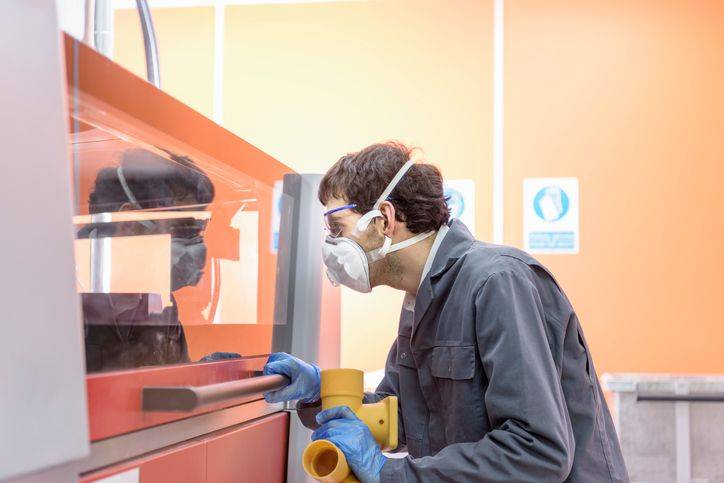
[ihc-hide-content ihc_mb_type=”show” ihc_mb_who=”reg” ihc_mb_template=”3″ ][vc_row][vc_column][vc_column_text]Credits: www.chiefexecutive.net
A recent study by Boston Consulting Group found only 34 percent of U.S. manufacturing executives have implemented some sort of additive manufacturing initiatives in their company. Additive manufacturing offers the ability to create products that were previously thought to be too complex, and it is now becoming a valuable part of the production process. Jesse Coors-Blankenship, CEO of Frustrum, Inc., told Forbes.com that despite the progress, there are a number of challenges to adoption.
“While experimentation and early adoption have garnered attention and created a buzz about additive manufacturing this past year, the reality is that companies are still slowly finding their way,” said Coors-Blankenship.
There are a few reasons additive manufacturing isn’t taking hold as quickly as one would have expected. It can require considerable capital investments for things like injection molding machines and milling equipment. Additive manufacturing can also call for new processes and entirely different ways of organizing plants. Yet one of the biggest challenges to adopting additive manufacturing is a capable, skilled and available workforce to run it all.
“THE BIGGEST ISSUE IS THAT ADDITIVE MANUFACTURING ISN’T A SINGLE TECHNOLOGY BUT A MULTITUDE OF TECHNOLOGIES, EACH WHICH IS IN ITS OWN STATE OF DEVELOPMENT.”
The manufacturing industry already has a skills gap that could leave 2 million manufacturing jobs unfilled by 2020, according to a report by Deloitte. But there could be even fewer qualified workers to support the growth in additive manufacturing design, processes, machines and technology. McKinsey noted a skills and knowledge shortage in additive manufacturing. Because AM pushes past the limitations of traditional and injection molding, it requires workers and engineers to think about processes in an entirely different fashion.
Finding the right talent is a challenge not only here in the United States but around the globe. Tim Minshall, Head of the Institute for Manufacturing at the University of Cambridge, told The Manufacturer that a lack of skills in design, production, materials and testing is the most-common industry barrier. The biggest issue is that additive manufacturing isn’t a single technology but a multitude of technologies, each which is in its own state of development. And as additive manufacturing is still in its infancy, much of the knowledge remains in companies which may not want to make such information available.
“There is a need to identify, document and agree on standards of the core knowledge relating to additive manufacturing…There needs to be consideration of the positioning of additive manufacturing skills development for those in full-time education, as well as those already in the workforce,” Minshall said.
Chief Executive noted last year that more universities are now offering degrees in additive manufacturing to teach students practical and analytical skills in design, development and fabrication in additive manufacturing technologies. To help fill the gap, a number of manufacturers have been turning to international innovation centers to develop, train and educate employees. Emerson opened an additive manufacturing technology center in Marhalltown, Iowa, and in January 2017, GE founded the GE Additive Education Program which will invest $10 million in the next five years in programs.
[/vc_column_text][/vc_column][/vc_row][/ihc-hide-content]
The U.S. Navy’s Maritime Industrial Base (MIB) Program, General Dynamics Electric Boat, and Lincoln Electric…
Caracol, a global leader in robotic large-format additive manufacturing, and RusselSmith, an ISO-certified provider of…
Works cited Additive Manufacturing Forecast 2025: Market - AMFG, accessed on June 28, 2025, https://amfg.ai/2025/02/12/additive-manufacturing-forecast-2025-market/…
National Additive Manufacturing and Innovation Company (NAMI), a joint venture between Dussur and 3D Systems…
The LEGO Group has announced the release of its first-ever mass-produced 3D printed component, which…
Boeing has unveiled a groundbreaking 3D-printed solar array substrate that promises to dramatically accelerate satellite…
This website uses cookies.